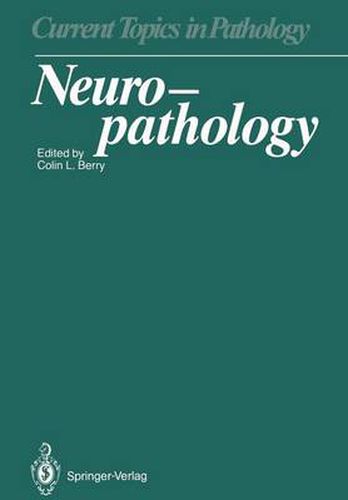Readings Newsletter
Become a Readings Member to make your shopping experience even easier.
Sign in or sign up for free!
You’re not far away from qualifying for FREE standard shipping within Australia
You’ve qualified for FREE standard shipping within Australia
The cart is loading…






This title is printed to order. This book may have been self-published. If so, we cannot guarantee the quality of the content. In the main most books will have gone through the editing process however some may not. We therefore suggest that you be aware of this before ordering this book. If in doubt check either the author or publisher’s details as we are unable to accept any returns unless they are faulty. Please contact us if you have any questions.
Increasing specialisation in pathology reflects the progressive changes in medical practise. The advent of a specialist with a new interest in a hospital or clinic may present the pathologist with a need to extend his or her knowledge to be able to work closely with the clinical practi tioner in order to provide adequate clinical care. Some sub-specialisations are long established, such a one is neu ropathology. However, an exclusive specialist practise is generally con fined to neurosurgical centres and much neuropathology is of necessity, executed by geneni.l pathologists. The areas covered by this volume are those which are commonly managed by the generalist. Professor Adams’ account of how the skull and brain should be examined here will give confidence to many by defining a good technique and the careful description of various kinds of vascular injury lesions resulting from raised intracranial pressure will help to clarify repeated difficulty. More subtle forms of damage are also considered in detail. Professor Weller provides a detailed account of how the central nervous system may be examined in a way which permits all of us to prepare material which will allow adequate investigation of central nervous system disease and the proper examination of peripheral nerves. This chapter will become a handbook and will be of interest to those in training and established practitioners. Muscle biopsy is also dealt with; this is an area of investigative concern for many gener alists. The role of that singular neuropathological technique is very clearly emphasized.
$9.00 standard shipping within Australia
FREE standard shipping within Australia for orders over $100.00
Express & International shipping calculated at checkout
This title is printed to order. This book may have been self-published. If so, we cannot guarantee the quality of the content. In the main most books will have gone through the editing process however some may not. We therefore suggest that you be aware of this before ordering this book. If in doubt check either the author or publisher’s details as we are unable to accept any returns unless they are faulty. Please contact us if you have any questions.
Increasing specialisation in pathology reflects the progressive changes in medical practise. The advent of a specialist with a new interest in a hospital or clinic may present the pathologist with a need to extend his or her knowledge to be able to work closely with the clinical practi tioner in order to provide adequate clinical care. Some sub-specialisations are long established, such a one is neu ropathology. However, an exclusive specialist practise is generally con fined to neurosurgical centres and much neuropathology is of necessity, executed by geneni.l pathologists. The areas covered by this volume are those which are commonly managed by the generalist. Professor Adams’ account of how the skull and brain should be examined here will give confidence to many by defining a good technique and the careful description of various kinds of vascular injury lesions resulting from raised intracranial pressure will help to clarify repeated difficulty. More subtle forms of damage are also considered in detail. Professor Weller provides a detailed account of how the central nervous system may be examined in a way which permits all of us to prepare material which will allow adequate investigation of central nervous system disease and the proper examination of peripheral nerves. This chapter will become a handbook and will be of interest to those in training and established practitioners. Muscle biopsy is also dealt with; this is an area of investigative concern for many gener alists. The role of that singular neuropathological technique is very clearly emphasized.